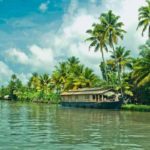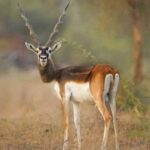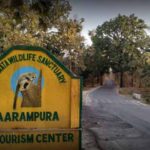10 Best Wildlife Sanctuaries in Kerala is one of the popular places in India for wildlife holidays, blessed with rich biodiversity. The forests and jungles in Kerala host abundant wildlife, including plants, mammals, reptiles, amphibians and avifauna, considered one of the most bio-diverse regions in the world. In the jungles of Kerala, numerous endemic birds and animals are found. With this intense biodiversity, Kerala is home to numerous national parks and wildlife sanctuaries, but it is natural. Some of the best wildlife sanctuaries in Kerala that you can visit for a satisfying wildlife holiday are listed below.
Kerala, generally known for its sun-kissed beaches, backwater cruises and Ayurveda therapy, is also renowned for its other feature that declares this state as “God’s own country” is the wildlife sanctuaries that stretch beyond Kerala’s length and width. No wonder it provides a wonderful opportunity to appreciate the grandeur or richness of the existence of the mother or the elegance and pleasing skill of her wild creatures. Here you are thrilled by the array of Top Wildlife Sanctuaries of Kerala with the view of beautiful wild animals, tempting forests, the abundance of nature and the enthralling beauties of the sky in the landscape of mysterious habitats.
Rajasthan Tour Planner built inspiring or exciting Kerala Wildlife Tour Packages is for you. Would you really like to visit Kerala in search of quiet and peace or for a fun packed holiday with few exciting adventure activities or to become a witness of the wonderful animals that are spotting in their natural location, no need to look further. No wonder these packages are actively planned to ensure that during your tour you have the best of all things 10 Best Wildlife Sanctuaries in Kerala.
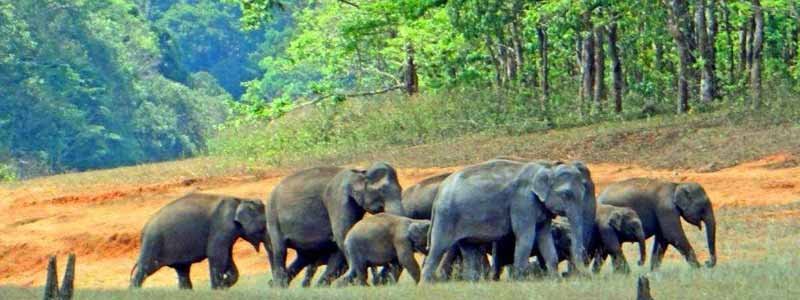
Periyar National Park
The Periyar Wildlife Sanctuary and National Park is the pride of Kerala on the shores of Periyar Lake. This is a protected area located in Kerala’s Idukki and Pathanamthitta districts. In the Western Ghats, the sanctuary that borders Tamil Nadu is situated in the Cardamom and Pandhalam hills. Also popular is the wildlife sanctuary with its tiger reserve and elephant reserve. Of the total protected area of 925 sq km, in 1982, 350 sq km was declared a national park. This park is also addressed as either the sanctuary of Periyar wild life or Thekkady.
The past of the Sanctuary and National Park of Periyar Wild Life is closely linked to the construction of the Mullaperiyar Dam. In the year 1895, the building of the dam across the Periyar River led to the creation of Periyar Lake. The forest that surrounds the lake was declared Periyar Lake Reserve Forest in 1899. The forest was later expanded into the Periyar Wildlife Sanctuary in 1950.
Authorities started to think about the value of saving endangered species with the start of Project Tiger in 1978. The wildlife sanctuary was well known because of its population of tigers. In view of this, under the Project Tiger mission, the sanctuary was purchased and made the 10th Tiger Reserve in India. The sanctuary was also declared as an Elephant Reserve when the Project Elephant mission was launched in 1991 10 Best Wildlife Sanctuaries in Kerala.
It will be like discovering the world around the sanctuary, enjoying the pristine and quiet environment around it and relaxing from your busy schedules. The wildlife sanctuary of Periyar is renowned for its rich fauna and flora. There is a tropical evergreen and moist deciduous forest here. This is where you can see teak, rosewood, sandalwood, mango, tamarind, banyan, bamboo, etc.
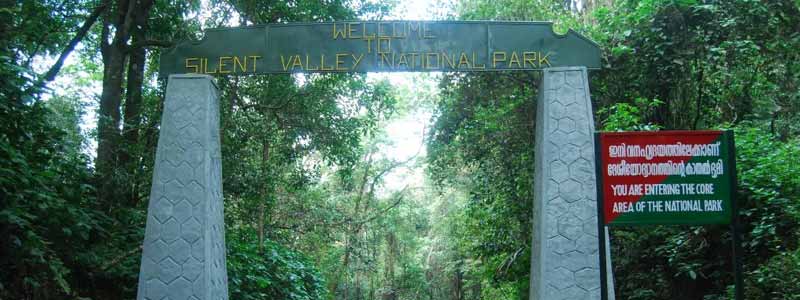
Silent Valley National Park
Silent Valley National Park is located in the district of Palakkad in the South Indian state of Kerala’s Nilgiri Mountains. It is one of its kind to protect natural rainforests.
Robert Wight, a prominent botanist, explored it in 1847. The Silent Valley is a Hindu epic linked with the Mahabharata. It was declared a national park by the government of India in 1984. In Kerala, in the local Malayalam language, the park is called Sairandhrivanam, as Sairandhri was in Mahabharata Draupadi during the time of exile.
Silent Valley is only a handful of India’s uninterrupted areas of rain forests and tropical wet evergreen jungle in the South West Ghats.
The heart of the Nilgiri Biosphere Reserve is Silent Valley National Park. The reverberation of the voices of swarming wildlife, considering the name of the park, Silent Valley.
Approximately 2000 m above sea level, the famous Kunthi River descends from the Nilgiri Mountains and goes to the maximum extent of this valley and runs down to the thick jungle grounds. The Kunthi river is crystal clear and eternal forever and it doesn’t get brown.
Silent Valley National Park is a small park in scale, but Silent Valley is a distinct destination from the other wildlife sanctuaries of India due to the flowering atmosphere of the park with the tall mountain peaks and several rivers flowing through the 10 Best Wildlife Sanctuaries in Kerala.
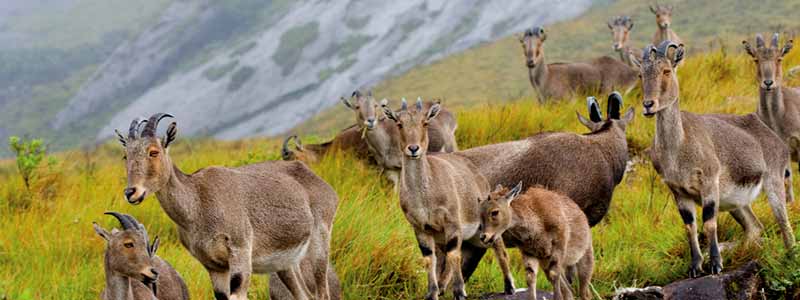
Eravikulam National Park
Eravikulam National Park in the high ranges of the Idukki district is spread over an extensive area of 97 sq km along the crest of the Western Ghats. It is situated 15 km from Munnar and is one of Kerala’s most popular tourist destinations. The Kerala Department of Forest and Wildlife, Munnar, manages the national park.
There is a consistent hill plateau in most parts of the national park. So, here, you can just see high, rolling hills. Anamudi, the highest point, is (2690m). The forests you see here are usually referred to as ‘shoals’-the evergreen tropical and sub-tropical wet broadleaf forest. Small streams can be found here, which later merge to form tributaries to the rivers Periyar and Chalakudy. In this area, Lakkom waterfalls are located.
Eravikulam was proclaimed a wildlife sanctuary in 1975 and then granted the status of a National Park in 1978. Protecting the rare Nilgiri Tahr and Hemitragus Hylocrious, which are common here, was the key motive behind this. But now there are several protected species of flora and fauna in the park.
Three regions are divided into the national park: the central area, the buffer area and the tourist area. The Rajamalai is considered to be the park’s tourism region. Here, to discover the secret beauty of the surrounding area, visitors are allowed to travel deep into the forest. Within, private cars are not permitted. In order to control air emissions, only a few mini-buses are run indoors. The forest department organises the trips.
The park has a rare range of tree and shrub varieties. Climax grasslands can be found here. One of the specialties of this park is the viewing of different orchids. In addition to Nilgiri Tahr, about 26 different species of mammals can be found in this park. There are a number of elephants, the langur and the marten. At Eravikulam National Park, about 120 species of birds such as black and ornamental flycatcher, Nilgiri pipit, Nilgiri wood pigeon, white bellied shortwing and Kerala laughing thrush can be spotted 10 Best Wildlife Sanctuaries in Kerala.
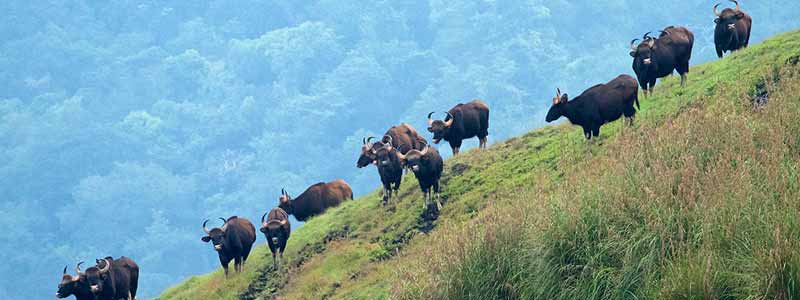
Idukki Wildlife Sanctuary
The Idukki Wildlife Sanctuary, which covers 77 square kilometres of forests around the Idukki Arch Dam, was established in 1984. The forest department’s ecotourism operations provide opportunities for those who want to discover, as seen from a cruise, what is beyond the surface of the wild.
Idukki Dam, the state’s first hydroelectric project, not only energises Kerala with electricity, It also provides the hordes of tourists who visit the site every year with fantastic travel experiences. In this slice of heaven, what first catches your eye is the wooded mountains that rise majestically beyond the lake. The Kuravan and Kurathi hills over which the dam was constructed still regale the traveller with the mythic tale of a couple who were cursed and turned into stones.
In the first light of the morning, the majestic lake extending over some 33 square kilometres of area glows. A touch of mist also hovers adamantly over the lake in the midst of the heat. Maybe a lake cruise by boat is the perfect way to start your day on the lake. Spectacular views of the vast woods on the shores of the lake unfold to grab your attention as you skate across the waters. If the woods on the banks will be this interesting, you wonder what the inside would be like 10 Best Wildlife Sanctuaries in Kerala.
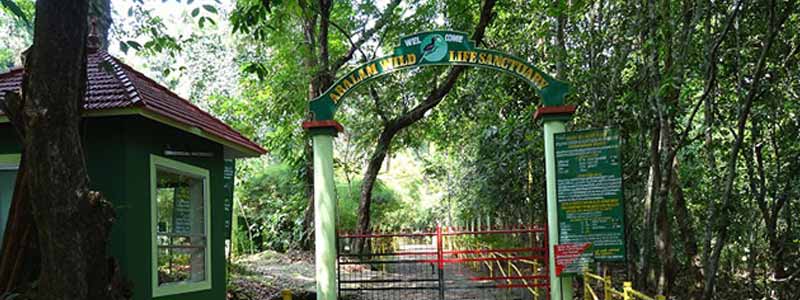
Aralam Wildlife Sanctuary
The Aralam Wildlife Sanctuary on the slopes of the Western Ghats is spread over 55 sq km of undulating forested highlands. Katti Betta, the highest peak here, rises to a majestic 1145 m above sea level. The Aralam Sanctuary, covered with tropical and semi evergreen forests, is home to a wide range of flora and fauna endemic to the Western Ghats. It is likely to see an elephant, gaur, sambar, spotted deer, barking deer, Nilgiri langur, Hanuman langur, giant Malabar squirrel, etc.
Also noted for the Central State Farm, a 3060 hectare farm started in 1971 by the Government of India, is Aralam, a village in Thalassery, Kannur. This is one of the country’s largest processing centres for hybrid coconut seeds. The northernmost wildlife sanctuary in Kerala, southwestern India, is the Aralam Wildlife Sanctuary. The region is only 55 km2 (21 sq mi) and is situated on the western slope of the Western Ghats. In 1984, it was created. Near Iritty is the headquarters of the sanctuary. The northernmost protected area of the state of Kerala, located in the southeast part of the Kannur District, is the Aralam wildlife sanctuary. The sanctuary area falls in the revenue villages of Aralam, Kelakam and Kottiyoor and is situated in the western Ghats’ northwest slopes adjacent to the Coorg (Kodagu) forests of Karnataka state district. It was created by dividing areas from the special division of the Odanthode Malavaram of Thalassery, which was a former private forest, subsequently taken over by Govt. As per the provisions of the 1971 Kerala Private Forests (Vesting and Assignment) Act and Wayanad Forest Division’s Kottiyoor RF. 32.64 km2 is the Vested Forest portion of the sanctuary and 22.36 km2 is part of Kottiyoor RF (Reserved Forest).
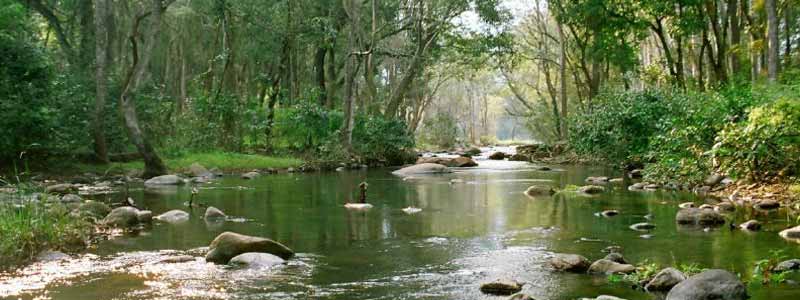
Chinnar Wildlife Sanctuary
The Chinnar Wildlife Sanctuary is situated in the eastern part of the high ranges of the southern Western Ghats. Eravikulam National Park occupies the south side of the sanctuary and Indira Gandhi Wildlife Sanctuary is on the north side.
With its floral, ecological, geomorphological and cultural significance, the 90-km-sq sanctuary is exceptional. With xerophyte plants, Chinnar is a rare thorny scrub woodland. Among the 12 protected areas of Kerala, this sanctuary is one.
Chinnar, an ideal place for trekking, is situated in the Western Ghats rainshadow area and receives far less rainfall every year. Chinnar is endowed with a wide variety of habitat types, such as deciduous trees, dry thorn scrub, riparian forest, shoals and grasslands, owing to this extensive variation of rainfall. Near the sanctuary, which is an additional attraction, there is an extensive sandlewood forest.
Chinnar has around 1000 blooming plant species and a wide range of medicinal plants. 225 recorded species of birds and the endangered species of the Giant Grizzled Squirrel of India can be seen here. The elephant, tiger, leopard, guar, sambar, spotted deer, Nilgiri Tahr etc. are other significant mammals that you can see here.
The Chinnar Wildlife Sanctuary, jointly organised by the Forest Department and the Eco-development Committees of the local tribal communities, is renowned for its eco-tourism activities. River trekking, trekking to the cultural site, nature trail to the watch tower, trekking to the Thoovanam falls, interpretation and medicinal garden activities, tree house at Chinnar, trekking and camping at Vasyappara are the eco-tourism facilities.
Chinnar is about 60 km away from Munnar, and Marayur, which is about 16 km away from the sanctuary, is the nearest town. Marayur, the land of natural sandlewood, as well as dolmens (ancient burial chambers) and local sharkara (yellow sugar) making units, can be visited.
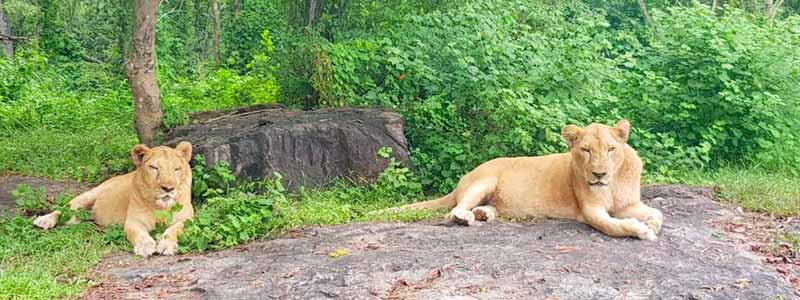
Neyyar Wildlife Sanctuary
Kerala’s magnificent evergreen state lies enclosed on the western side by the Western Ghats and on the eastern side by the emerald blue-greens of the Arab Sea. The scenic Neyyar Wildlife Sanctuary is situated about 32 km from the capital city of Trivandrum. It consists of an untouched natural vegetation of around 12800 hectares that is home to an exotic variety of flora and fauna.
For the residents of Trivandrum City who want to take a break from the steel and concrete panorama of city life and get close to nature, this spectacular nature lovers’ paradise is a perfect weekend getaway. In reality, tourists visiting Trivandrum are also very fortunate, as there are a host of natural tourism spots here, including many scenic beaches, backwater cruises, lakes, cool hills and, of course, the enormous dams and reservoirs.
One such feature, located in the southeast of the majestic Western Ghats, is the Neyyar Wildlife Sanctuary, covering a region of about 128km2 of pure, natural beauty. It covers the Neyyar River drainage basin along with its tributaries, the Mullayar and Kallar Rivers. There are a variety of features to be enjoyed here, including a high watchtower, a crocodile rehabilitation centre to indulge in spectacular views of Mother Nature at its finest, A park of deer and even a park of lions on one of the reservoir’s secluded islands.
For those who also love trekking, there are several options; it also provides opportunities to see the abundant local flora and fauna in this part of Kerala. There are hundreds of other fauna to catch your imagination, besides the elephants, Slender Loris, sloth bears, barking deer, Nilgiri tahr, bonnet macaques, langurs, tigers and leopards. With over 176 species of birds found here, this is also a birder’s paradise. You could go to the Meenmutty waterfalls for a one-day or two-day guided trekking trip or even climb up the 1868m-high Agasthyakoodam hill, a popular picnic spot. On its slopes, a variety of ayurvedic medicinal plants grow and the green meadows here offer great enchanting views. It’s also a popular eco-tourism spot and a part of the Biosphere Reserve of Agasthyamalai.
But you could always opt for a guided boat tour of the giant Neyyar reservoir if you’re looking for more tame fun. The gentle, refreshing breeze over the placid surface of water interspersed with mysterious green islets is perfect for city-bred souls to be revived and rejuvenated. You could stay in Kovalam at the much-searched-after Raviz resort while you enjoy all that the surroundings of Trivandrum have on offer.
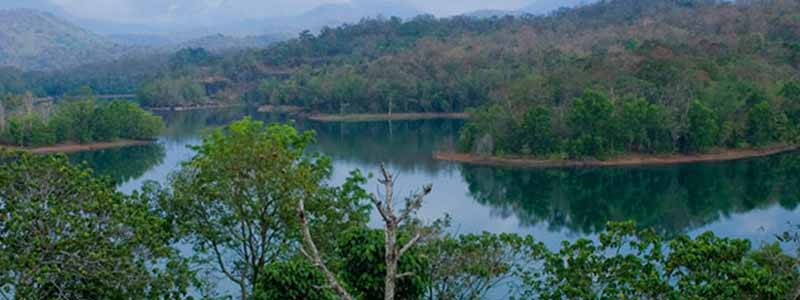
Peppara Wildlife Sanctuary
The Peppara Wildlife Sanctuary lies on the outskirts of the capital city and is spread over an area of 53 sq. The Km. It was founded in 1938 in the Western Ghats. For its damsite, dense forest areas, crystal clear streams and rugged terrains perfect for adventure expeditions, the region is fascinating.
The sanctuary has a wealth of mammalian fauna and is emerging as a major attraction for lovers of nature and ornithologists.You can see the Asian elephant, the sambar, the leopard, the lion-tailed macaque. Birdlife includes endemics such as Malabar Grey Hornbill, Whitebellied Treepie, Tiny Sunbird, etc. The Peppara Wildlife Sanctuary on the Karamana River near Thiruvananthapuram, India, contains the catchments of the Peppara Dam.
In 1983, the Peppara Dam was commissioned to increase the supply of drinking water to the town and suburban areas of Thiruvananthapuram. It was proclaimed a sanctuary in 1983, considering the ecological importance of the region. The area was formerly part of the Thiruvananthapuram Territorial Division’s Paruthippally Range. The forests consist of part of the Palode (24 square kilometres) and part of the Kottoor (29 square kilometres) reserve. The reservoir has a gross water distribution of 5.82 square kilometres (2.25 sq mi). On Thiruvanthapuram-Ponmudi Route, about 50 km northeast of Thiruvananthapuram, is the Peppara Wildlife Sanctuary. Forest forms include tropical evergreen West Coast, tropical evergreen Southern Hilltop, semi-evergreen West Coast, mixed deciduous forest Southern Moist, Myristica Swamp Forest, sub-montane hill valley swamp forest, etc. The sanctuary has a wealth of mammalian fauna and is emerging as a major attraction for lovers of nature and ornithologists. The sanctuary is home to 43 species of mammals, 233 species of birds, 46 species of reptiles, 13 species of amphibians, and 27 species of fish.
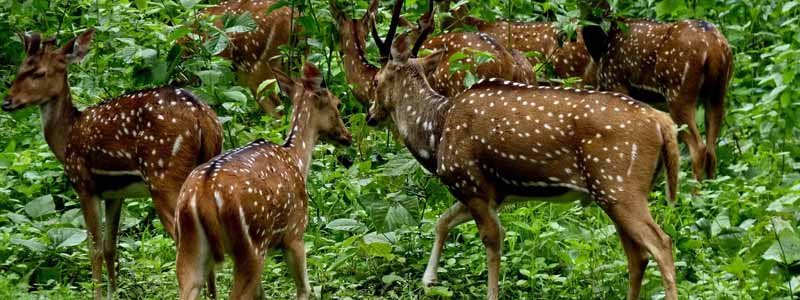
Rajamala Wildlife Sanctuary
Rajamala Wildlife Sanctuary is home to half the population of this endangered mountain goat worldwide. The Rajamala Wildlife Sanctuary, which is rapidly approaching extinction, is an effort to save this endangered species of the goat family.
A section of the Eravikulam Wildlife Sanctuary is the Rajamala Wildlife Sanctuary. Only within the tourist area in the Rajamala region are tourists permitted to go. In order to preserve equilibrium and sanctify the natural environment that promotes the survival process of these wild animals, this approach is used. It is estimated that the total number of Nilgiri Tahrs at Rajamala is 1317.
You have to go and visit Rajamala Wildlife Sanctuary if you are an animal lover and enjoy their company. The Rajamala Wildlife Sanctuary offers shelter in Kerala for various species of wildlife and gives visitors the chance to see these unique creatures in their natural habitat. Wildlife sanctuaries are built for the survival of species on the brink of extinction. Kerala’s wildlife sanctuaries help visitors get closer to these animals and study their ecosystems. Rajamala Wildlife Sanctuary is considered one of Kerala’s finest wildlife sanctuaries, with a wonderful environment to make the place enjoyable for any tourist 10 Best Wildlife Sanctuaries in Kerala.
You can also enjoy the Crocodile Farm, Deer Farm and Lion Safari Park on your trip to the Neyyar Wildlife Sanctuary and take thrilling boat trips on the lovely Neyyar Lake. Many trekkers do not let go of the opportunity to trek while at Neyyar Wildlife Sanctuary along Agasthyakoodam Peak.
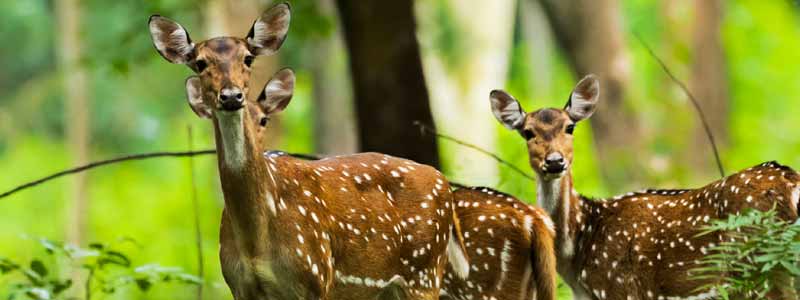
Wayanad Wildlife Sanctuary
Spread over a sprawling 344 sq. field Km. The personified version of the famous wildlife sanctuaries in the South is the Wayanad Wildlife Sanctuary. A small portion of the Nilgiri Biosphere Reserve is a wildlife sanctuary. There are two portions of the wildlife sanctuary: Muthanga, partnering with Tamil Nadu to the east, and Tholpetty, bordering Karnataka on the north side. It is best to discover the terrain of the forest by sitting on the back of an elephant or jumping on a jeep safari. During the monsoon, at this time a party of elephants, the national park springs back to life; wander freely here and there without any intrusions. The Muthanga region is great for elephant sightings in the Wayanad district, often in the thick bamboo groves flanking the main road. Wayanad wildlife sanctuary is actually one of those locations where the elephant project was launched.
The Wayanad Wildlife Sanctuary is one of South India’s most diverse wildlife reserves. The mountain stream called the Kakkayam River passes through the thickest semi-deciduous and deciduous forests, where deadly animals such as the sloth bear, tiger, elephants and deer come to search for their thirst. The National Park’s lush green forest is home to paddy fields, coffee, rubber plantations and cardamom plantations. There is a chequered past in the sanctuary. The place is still home to many tribal families from the sanctuaries who remain there 10 Best Wildlife Sanctuaries in Kerala.


